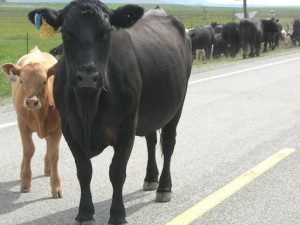I just finished œA Fate Worse Than Death, a book on Indian captivities in the 1800s. That is, white settlers (the authors did not cover Mexican captivities), primarily from Texas, taken as hostages by Native American raiders. The subject was interesting, but like a few other popular history books I™ve read, the writing was crappy.
In this case, the authors had an axe to grind (no pun intended) against what they saw as Indian apologists who downplay Indian atrocities against white settlers in the 1800s. Ostensibly, the book is a listing and description of captive stories. But as the book went on, their commentary (in the form of annotations to footnotes) became more strident, as if they got angrier with each story. The final chapter lists the offending œIndian apologists and trashes them for their prejudices with no apparent sense of irony.
(The one star comments in Amazon on “Fate Worse Than Death” and “Empire of the Summer Moon” accurately express my thoughts on these books much better than I can.)
I did learn something, though; the existence of depredation claims. The US had an Indian depredation claims policy in place since the late 1700s. Under this system, if anyone “ including a member of an Indian tribe “ could substantiate property damages as the result of actions by an Indian tribe in amity with the US, that person could file a depredation claim and seek reimbursement. If approved, the money to pay the claim would be deducted from whatever payments the government was giving to the offending tribe. But here™s the catch: the claims had to be for property “ horses, cattle, buildings, etc. “ and were not applicable to kidnapping, loss of work value, pain and suffering, etc. (You can read more about it from an 1890s-era report, here.)
So these settlers would set up house somewhere west of the settled areas of Texas, on the southeastern edge of Comancheria. Occasionally, Comanches raiders would come off the plains, kill the adult men and infants, take all the women and children they could carry along with all the horses they could drive, and head back into the hinterlands where no one could follow. At some point, sometimes years later, someone would file a depredation claim on behalf of the family. The claims often included captive™s narratives of their harsh treatment (if they survived), details of the treatment of people killed, and a list of property lost . . . only to be told their claim was rejected because they could only claim damages to property. In some cases this process took decades and only resulted in a settlement of a few hundred dollars if anything.
Not all of the settlers were poor farmers for whom homesteading held out their only chance in life. But interestingly, most of the families listed in this book moved to Texas from other states, and even Europe (with Germany heavily represented). I guess Texans who had been there a generation or so knew better and didn’t bother to tell the newcomers. Mexico had a similar policy after it learned how ferocious the Comanche warriors fought; they encouraged Americans to settle the area, though in the end, that plan backfired (that is, if you think Texas is an asset to the US).
Meanwhile, the Indians learned that taking hostages was good business. For one thing, they stood to make a good trade in ransoming them back. When the tribe wanted to be left alone for a while, especially as winter came on, they could offer to make peace, return the hostages, and get compensated in provisions which would hold them over until spring and the advent of the next good raiding season.
But what was really astounding to me, was that during the forty year period covered by this book “ 1830s-1870s “ these dumb ass settlers kept coming. Men kept bringing wives and children to the edge of hostile territory . . . and then complained to the government when family members and stock were killed or taken.
According to the last good subject/shitty writing history book I read, œEmpire of the Summer Moon, Comanches defeated attempts by France, Spain, and Mexico to move into Comancheria “ which covered parts of New Mexico, Texas, Oklahoma, and Colorado. These previous would-be conquerors had the decency to send in their armies first. Spain, in particular, had a nice system of sending in the army to secure the land (establishing presidios), Catholics to enslave assimilate the natives (in missions), and only then recruit pobladores to settle the tamed areas (in designated pueblos).
Now, I don™t expect that Texas shareholders in the 1840s were sitting around the hearth reading histories on the Spanish conquest of the New World. But raids were regularly reported in newspapers; people knew where they occurred in the past and where they were like to occur again. But they kept coming anyway. And after they suffered whatever tragedy might come their way, they made a claim for the property damages, and more often than not, lost that battle, too.


